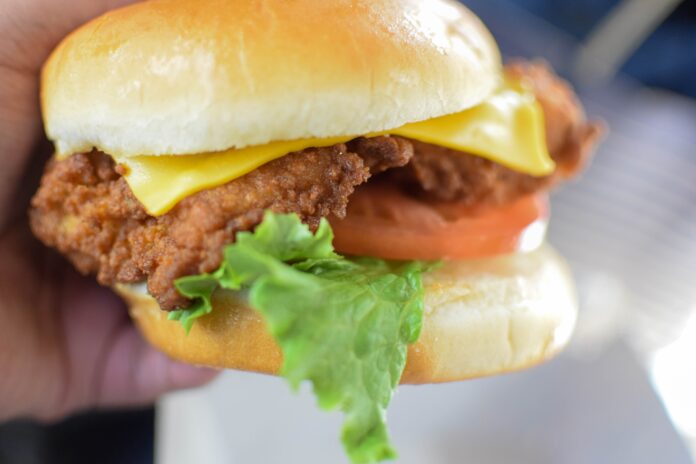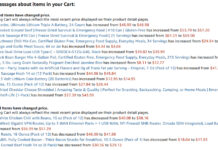I can understand why the complex supply chain that stretches from factories overseas to ports in the U.S. before finally reaching our local store shelves might fail. Multiple parts have to be sourced from multiple suppliers, each of whom in turn get their raw materials from different parts of the world. All the parts then have arrive at the same factory at the same time to be assembled into a finished product. Any failure in one step holds up the others. This is why a chip shortage is halting vehicle production in Detroit and other cities. It’s why we may see shortages and long lead times on everything from major appliance to popular toys for Christmas.
I would not call myself sympathetic to their plight, but I can understand both how and why it might happen when the supply chain has so many links.
A shortage of chicken, on the other hand, I don’t get.
Chickens are raised domestically and meat chickens go from a chick breaking out of an egg to raw meat on your grocer’s shelves in about seven weeks. So if there is a surge in demand, the answer seems simple: raise more chickens.
OK, I guess that means you need more fertilized eggs, which means you need more mother hens. Figure that’s another five months. Then you may need more chicken houses, or factory farms, to raise them. Maybe slaughter houses have to work faster, or add lines and employees, but we’re talking chickens, not silicon chips.
From my perspective, the logistical challenges of bring more chickens to market should pale in comparison to producing a computerized modern vehicle with an internal combustion engine and a plethora of safety features.
Blame the Fast Restaurants
It seems that the burger wars have opened a new front on the chicken sandwich front. Once the domain of Chik-fil-A, a true fried chicken sandwich was a rarity in the fast food drive through. McDonalds and Wendy’s offered chicken sandwiches with patties, but these were nothing more than giant chicken nuggets on a bun.
It was Popeyes who fired the first shot in the chicken war when they introduced their challenger. I know I saw lines of cars outside their parking lots holding up traffic. Then KFC joined the battle wtht heir opening salvo. The result is more fast food companies serving more sandwiches with whole pieces of chicken. Throw in COVID-19 disruptions, and it’s enough to cause a chicken shortage.
A couple generations ago, steak was the quintessential American food. Pot roast was what’s for dinner. Today, Americans consume more chicken than beef. They don’t each more chicken sandwiches than burgers at fast food outlets, but we may be heading that way. Cost is a big contributor, both in your dining room and in the restaurant boardroom. Chicken is cheaper, in part because the meat breeds are very efficient at converting feed to body mass and are ready for slaughter in six weeks.
White Meat vs Dark
A chicken has to breasts, two thighs and two drum sticks, but the breast is the most expensive cut, because demand for white meat is so high. I prefer the more flavorful, moister dark meat, but more Americans go with the white meat because they have been convinced that it is healthier. The result is that you can often buy drum sticks and thighs for 99 cents a pound, or even less. It’s also why the U.S. exports more dark chicken meat than white.
I’m hoping that so many chicken breasts are sold that there is a flood of dark meat and prices drop. We could use some lower food prices.
There is a similar reason why pork chops and pork roast are less expensive than their beef counterparts, and that is because of the high demand for bacon.
Have you seen how much bacon is sold by many of these same fast food restaurant? Bacon burgers. Breakfasts of bacon and egg biscuits. Bacon crumbles on salad. If a 200 pound pig yields 40 pounds of bacon, that leaves plenty of other cuts that have to be sold. Ham. Chops. Pork tenderloin. I believe the demand for bacon is driving the pork market, and the price on these other cuts are low to move them.
My advice: If you eat animal protein and have no religious objection to eating pork, stock up on pork and dark meat chicken.
Demand and Price
Whenever demand rises, so do prices, especially if demand outstrips supply. I am already outraged at the cost of a single meal at a fast food restaurant. Lunch for my wife and I at Chik-fil-A or a competitors can cost $18 or $20. When I was a kid, we could often eat out with our family of four for $10 or $11.
There we go: Inflation rearing its ugly head. Food prices are rising globally, and in your local grocer. Expect them to rise at your favorite fast food place as well.
In addition to stocking up, consider raising your own. We’re looking primarily at egg layers, but maybe we’ll take a second look at meat birds. A 50 pound bag of chick feed is only $17.







